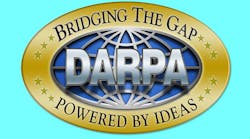For about the past 15 years, the Defense Advanced Research Projects Agency, better known as DARPA, has been challenging the entire engineering community to do something incredibly difficult. It also offers a cash prize to the team or individual that was best at completing the task; if no one completes the task, DARPA keeps its prize money.
The first challenge, for example, called for robotic vehicles to travel a 150-mile defined route over rough terrain country all on their own. No help from anyone. The winning team would take home a $1 million prize. None of the robotic entrants made it any farther than about 7.25 miles. DARPA held a similar challenge the next year and five vehicles managed to complete the course.
DARPA decided to take the Challenger route over the last decade-and-a-half, offering cash prizes to the winner of their “contests” for a couple reasons:
To get new ideas. Unlike grants and contracts awarded in hopes the recipient will succeed, prize competitions let DARPA establish an ambitious goal without having to predict who or which approach is most likely to succeed. This opens the door for novel approaches that might otherwise seem too risky to pursue.
To get a wider variety of people working on the challenge. Cash prizes attract an array of potential solvers, from Fortune 100 companies to high school science class teams to backyard mechanics—not just the usual experts in a given field.
The economics are great. Prizes are paid out only if a team succeeds, and in many cases, the amount of time and money invested by several teams competing for the prize far exceeds the size of the purse. Plus, DARPA gets info on new approaches that might lead to something further on down the road.
There are currently three challenges in various stages: the Spectrum Collaboration Challenge, the Subterranean Challenge, and the Launch Challenge.
The Spectrum Challenge tasks teams to devise strategies that will let radio networks use artificial intelligence and machine learning to best determine how the radio-frequency spectrum will be used moment-to-moment while avowing interference and exploiting opportunities. The winner will take home $3.5 million. The finals are this year, Oct 23, at the LA Convention Center. It is free and open to the public. (Hope it’s on TV.)
The Subterranean Challenge asks teams to come up with hardware and algorithms to map, navigate, and search underground environments including tunnels, urban undergrounds, and caves. Teams can build hardware, develop a virtual device, or both. The final event will be held 2021 and the winner could haul in $3.5 million if it wins in both categories.
The Launch Challenge is pushing teams to figure out how to launch into space what customers want launched, when they want it launched, and from the site of the customer’s choosing—all for a reasonable price. DARPA has already got it down to three teams, so early next year, teams will get details of the launch site 30 days before take-off. Payload and LEO orbit info will come two weeks out from take-off. Teams that manage to put a payload into the right orbit will win $2 million. Within weeks after the first flight, teams will be tasked with sending a different payload into a different orbit from a different launch site.
The challenges are definitely challenging, but the results and info all ends up with DARPA, a defense agency. I’d like to see similar program for civilian projects aimed at low-cost housing, reasonably priced higher educations, clean water, and other goals on the civilian rather than military side. (For details on the DARPA challenges, click here.
What challenge would you like to see the U.S, engineering community tackle?

